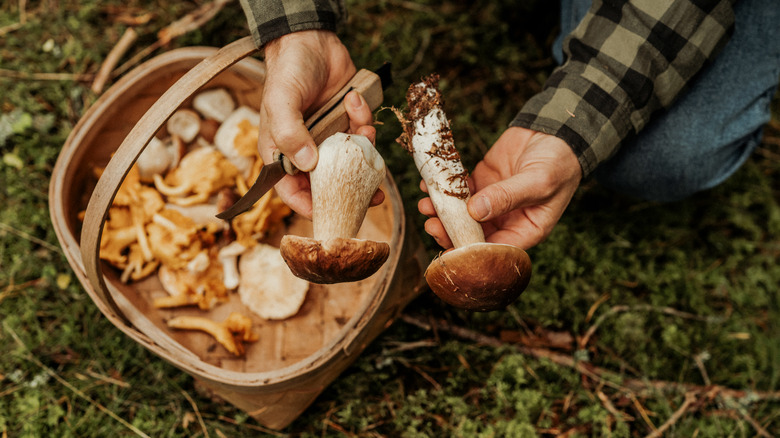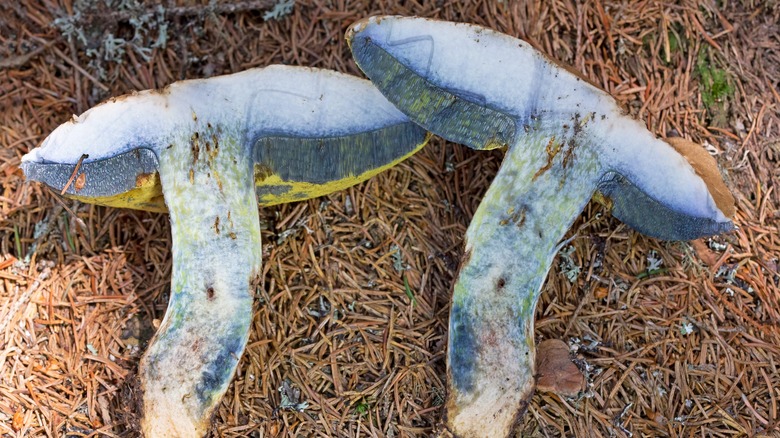How To Distinguish The Rare And Expensive Porcini Mushroom From Lookalikes
As your mother always told you, it's a bad idea to eat any of the berries and mushrooms you come across in the woods. As delicious as they seem on the outside, the inside can pack enough poison to put an end your forest treks forever. In fact, hundreds die each year from mushroom poisoning alone, as it's easy to confuse the yummy ones with the toxic ones. This is where expert foragers come into their own, separating the death cap mushrooms from the paddy straw, the golden chanterelle from a Jack O'Lantern, and boletus huronensis from boletus edulis — better known as porcini mushrooms. This makes it essential to learn the different types of mushrooms.
The good news is that confusing a porcini with boletus huronensis probably won't kill your guests, but it may turn their intestines into a sloppy keg party with hours of severe gastrointestinal distress and debilitating vertigo. While both mushrooms share similarities in shape and size, they offer several key differences that can reveal if you've got the lady or the tiger. First, the pore surface of the boletus huronensis will stain blue with bruising, while porcinis will not. The stem — which is generally safe to eat in edible mushrooms — also distinguishes the two, with white netting on porcinis and a solid, yellowish color on its toxic lookalike. Texture can also give them away, with the huronensis sporting a distinctly hard and rubbery surface. Bug activity offers another tell, as porcinis are wormed into, but huronensis typically remain unscathed.
Other porcini lookalikes
As porcinis remain a top mushrooms for culinary enthusiasts and chefs, they've become a particular prize for foragers, who can sell them for more than $60 per pound. This offers yet more impetus to finding them — and more danger from other false friends. Tylopilus felleus, otherwise known as the "bitter bolete," is an example. Luckily, ingesting this will merely ruin a meal, not your colon. Identify them by the light coral pink color of the bitter's pore surface under the cap, as well as brown webbing on the stem. Another is rubroboletus satanas, or "Satan's bolete." This is even easier to distinguish, thanks to the bright red stems on its porcini-like body. If abdominal pain, vomiting, diarrhea, and a possible emergency room visit seem like a good time, this is the mushroom for you. The blue staining with cutting also underscores a good rule of thumb for mushroom foraging: "Red or blue may make you spew."
Unfortunately, because porcinis are so prized, too many people have discovered the results of choosing poorly. This is because porcinis are difficult to cultivate and come wild. As a mycorrhizal species, they depend on a symbiotic relationship with a host plant, drawing the carbohydrates they need from it and channeling soil nutrients back in. The porcini growing season is also short, primarily lasting between September and November. Porcinis tend to spoil quickly, in part to issues of worms, giving them a short shelf life and making them ideal for making porcini powder to pair with steaks and other dishes.

